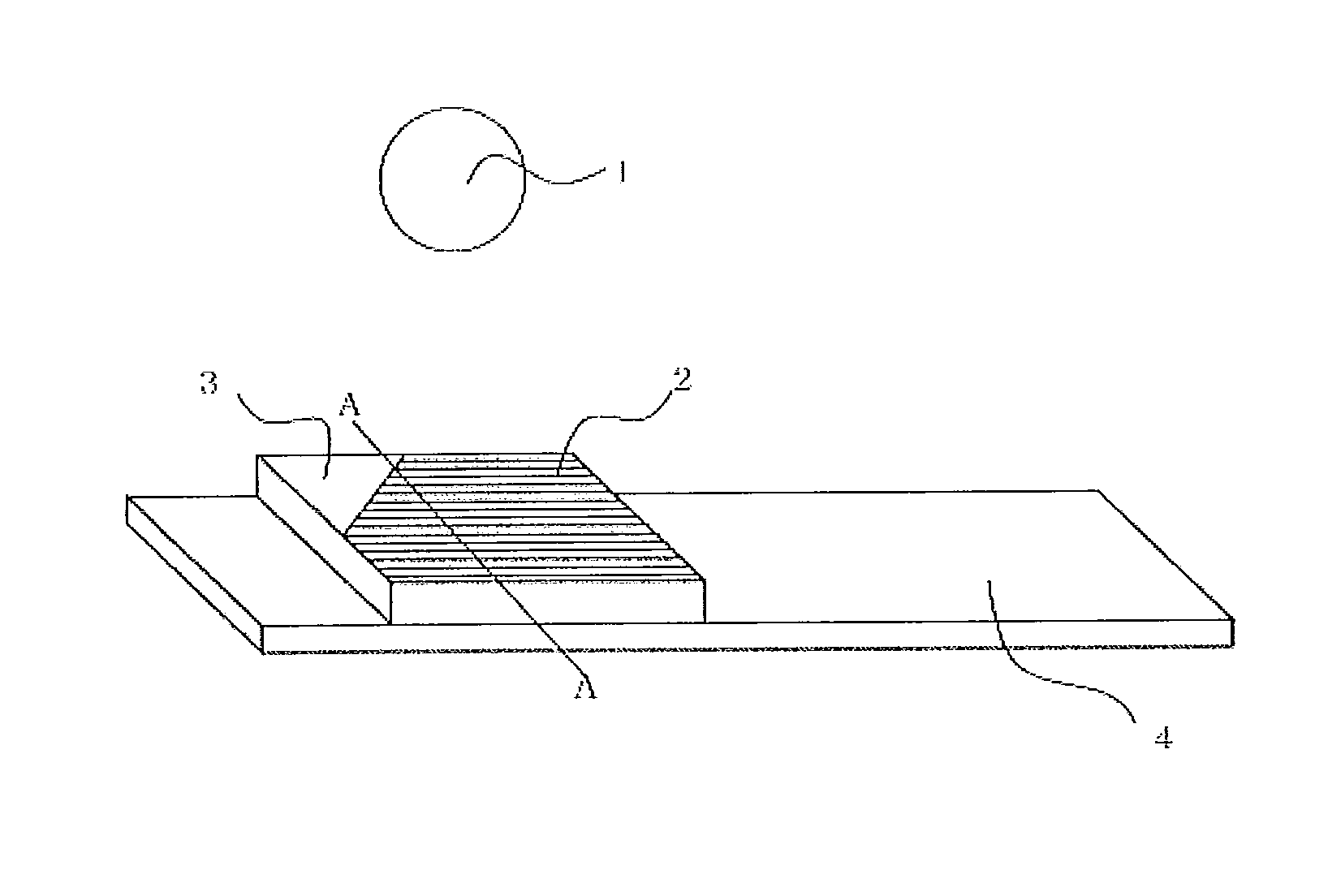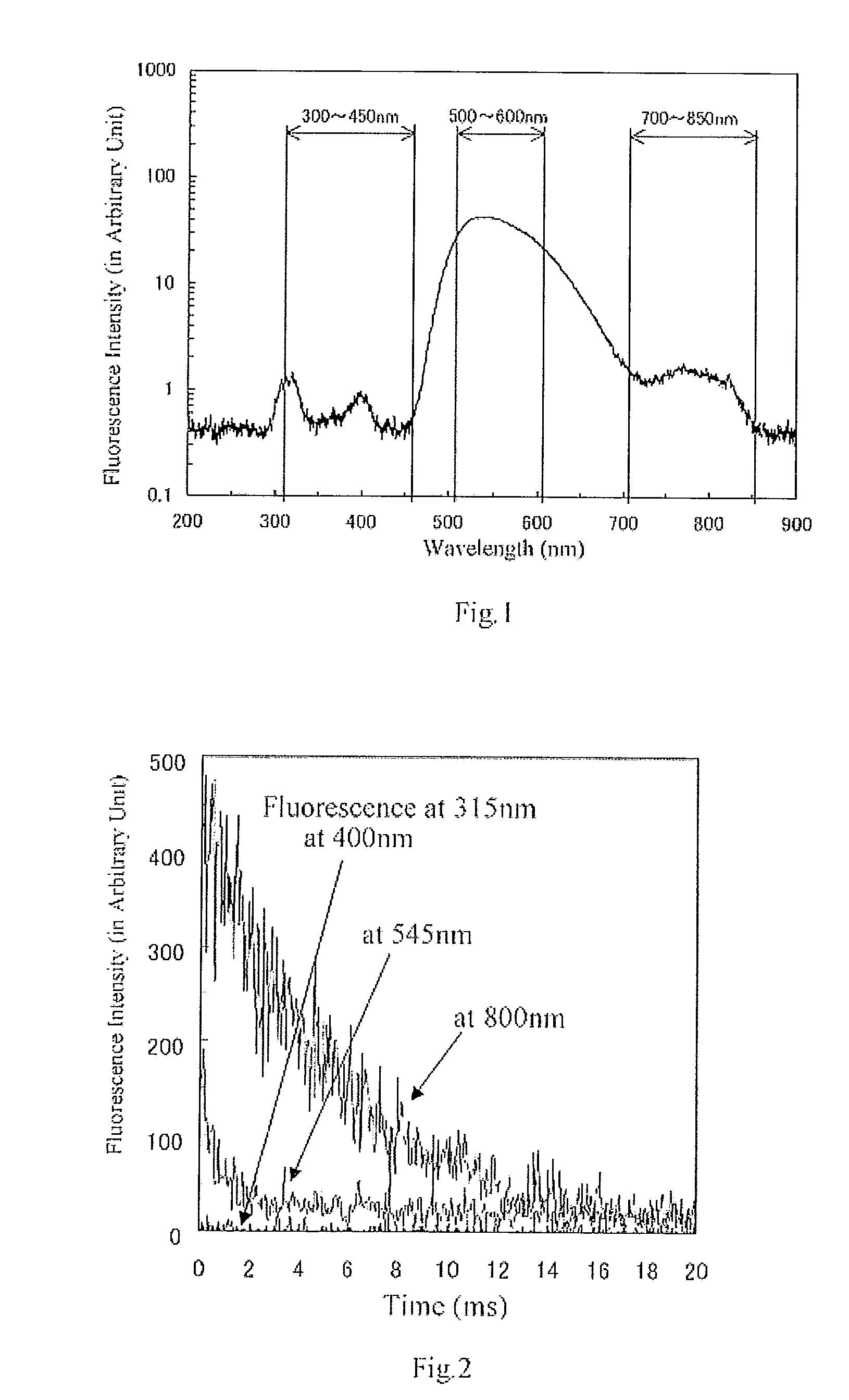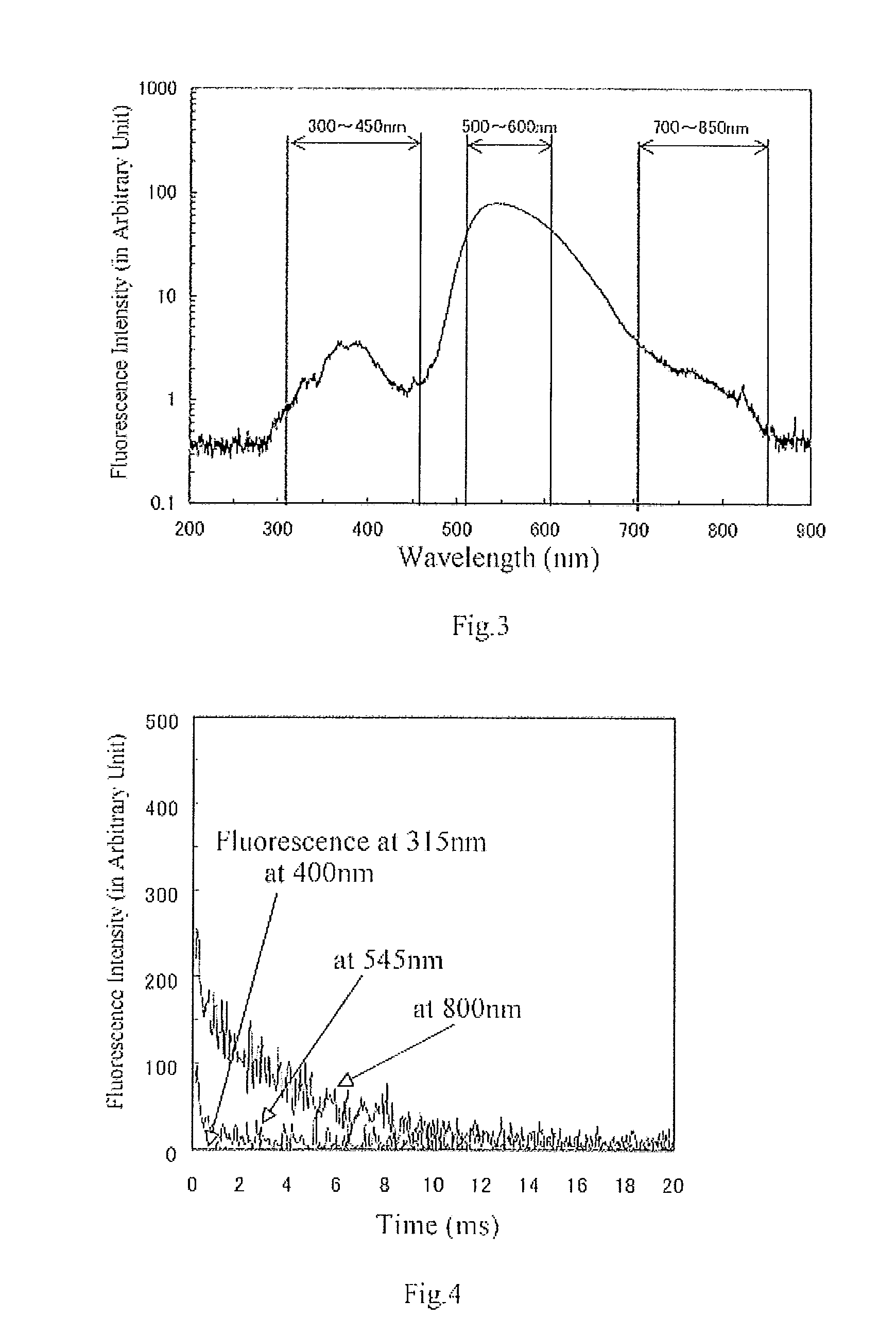Fluorescent material, scintillator using same, and radiation detector using same
a fluorescence material and scintillator technology, applied in the direction of fluorescence/phosphorescence, conversion screens, optical radiation measurement, etc., can solve the problems of reducing the use efficiency of x-rays, vibration from the exterior vibrating the electrode plate, and high internal pressure of the xenon gas filled chamber, so as to reduce the afterglow level and reduce the scan time. , the effect of increasing resolution
- Summary
- Abstract
- Description
- Claims
- Application Information
AI Technical Summary
Benefits of technology
Problems solved by technology
Method used
Image
Examples
example 1
[0176]A resin pot having a volume of 1 liter was provided. An amount of 200 g of a raw material, 1300 g of a high-purity alumina ball having a diameter of 5 mm, and 200 cc of ethanol were placed into the pot. After mixing the contents for 12 h, change in the mass of the alumina ball was 0.06 g. In view of this, and considering that Al2O3 from the ball of a ball mill will enter into the mixture, in order to achieve the composition of example 1 in table 2, 126.91 g of Gd2O3 (Fe: 0.4 mass ppm), 0.363 g of CeO2, 40.62 g of Al2O3 (Fe: 0.2 mass ppm), and 32.05 g of Ga2O3 (Fe: 0.2 mass ppm) were weighed. Regarding a powder made of a Gd2O3 raw material, a powder having an average particle size of 2 μm was used (the average particle size refers to an median particle diameter herein). Regarding a powder made of an Al2O3 raw material, a powder having an average particle size of 0.6 μm was used. Regarding a powder made of a Ga2O3 raw material, a powder having an average particle size of 3 μm wa...
example 2
[0179]A resin pot having a volume of 1 liter was provided. An amount of 180 g of a calcined power having a temperature of 1400° C., 1300 g of a high-purity alumina ball having a diameter of 5 mm, and 200 cc of ethanol were placed into the pot. After mixing the contents for 12 h, change in the mass of the alumina ball was 0.20 g. In view of this, and considering that Al2O3 from the ball of a ball mill will enter into the mixture powder (if the abrasion loss of the alumina ball produced by the milling and mixing operation is added thereto, the sum is 0.26 g), in order to obtain the composition in example 2 in table 2, 122.19 g of Gd2O3 (Fe: 0.1 mass ppm), 0.105 g of CeO2, 30.77 g of Al2O3 (Fe: 0.1 mass ppm), and 46.68 g of Ga2O3 (Fe: 0.2 mass ppm) were weighed. Regarding a powder made of a Gd2O3 raw material, a powder having an average particle size of 2 / U m was uses. Regarding a powder made of an Al2O3 raw material, a powder having an average particle size of 0.6 μm was used. Regardi...
example 3
[0180]In order to obtain the composition in example 3 in table 2, 115.96 g of Gd2O3 (Fe: 0.4 mass ppm), 1.337 g of CeO2, 21.95 g of Al2O3 (Fe: 4 mass ppm), and 60.69 g of Ga2O3 (Fe: 0.2 mass ppm) were weighed. Only the Ga2O3 powder that had been in advance heat treated at 1400° C. for 3 h under a vacuum of approximately 10 Pa was used. This decreased the content of Fe from 1 mass ppm to 0.2 mass ppm. Otherwise, the method similar to that in example 1 was applied to obtain a scintillator by use of a polycrystalline fluorescent material as a sample.
PUM
| Property | Measurement | Unit |
|---|---|---|
| mass % | aaaaa | aaaaa |
| wavelength range | aaaaa | aaaaa |
| wavelength range | aaaaa | aaaaa |
Abstract
Description
Claims
Application Information
 Login to View More
Login to View More - R&D
- Intellectual Property
- Life Sciences
- Materials
- Tech Scout
- Unparalleled Data Quality
- Higher Quality Content
- 60% Fewer Hallucinations
Browse by: Latest US Patents, China's latest patents, Technical Efficacy Thesaurus, Application Domain, Technology Topic, Popular Technical Reports.
© 2025 PatSnap. All rights reserved.Legal|Privacy policy|Modern Slavery Act Transparency Statement|Sitemap|About US| Contact US: help@patsnap.com



